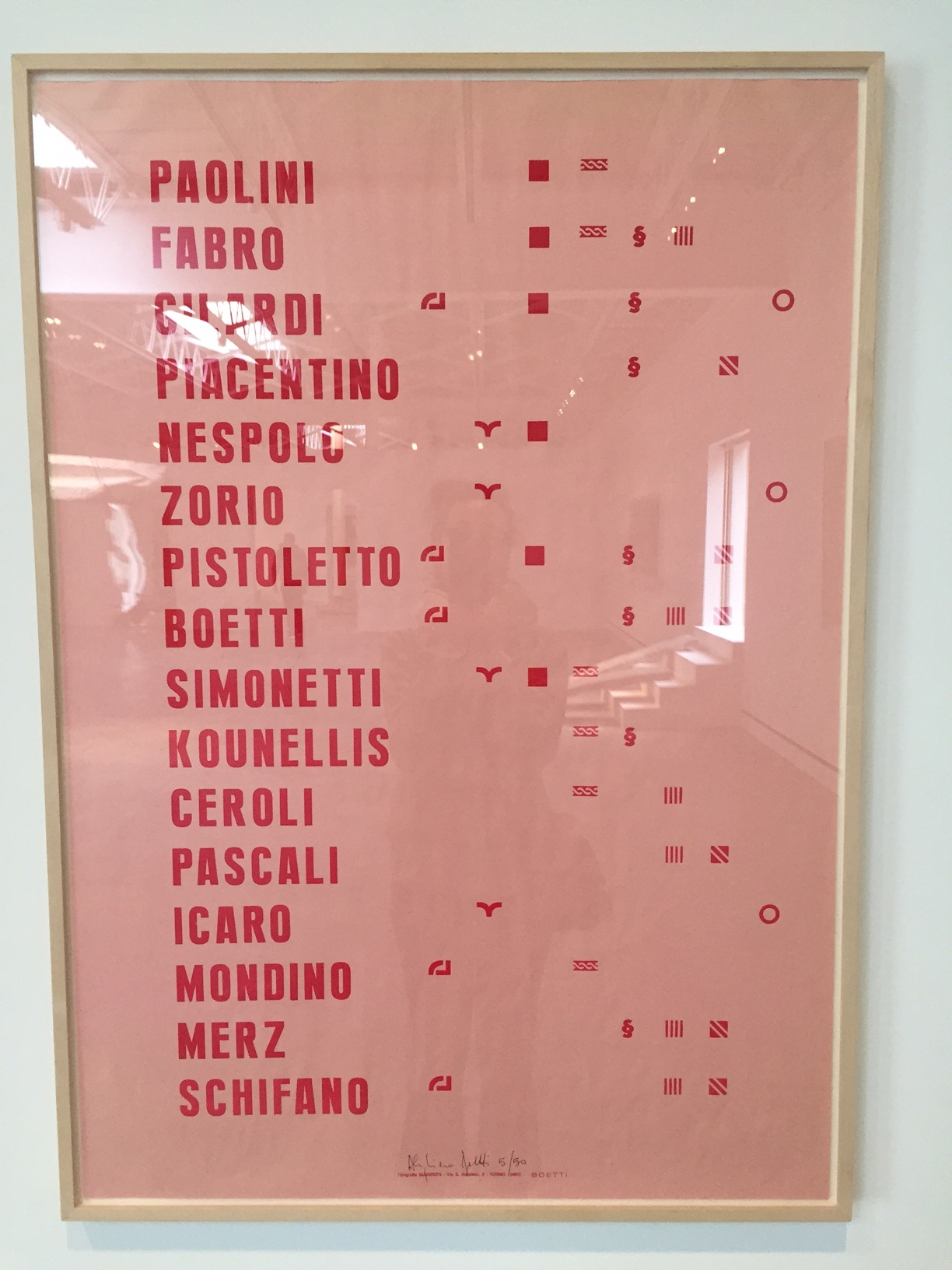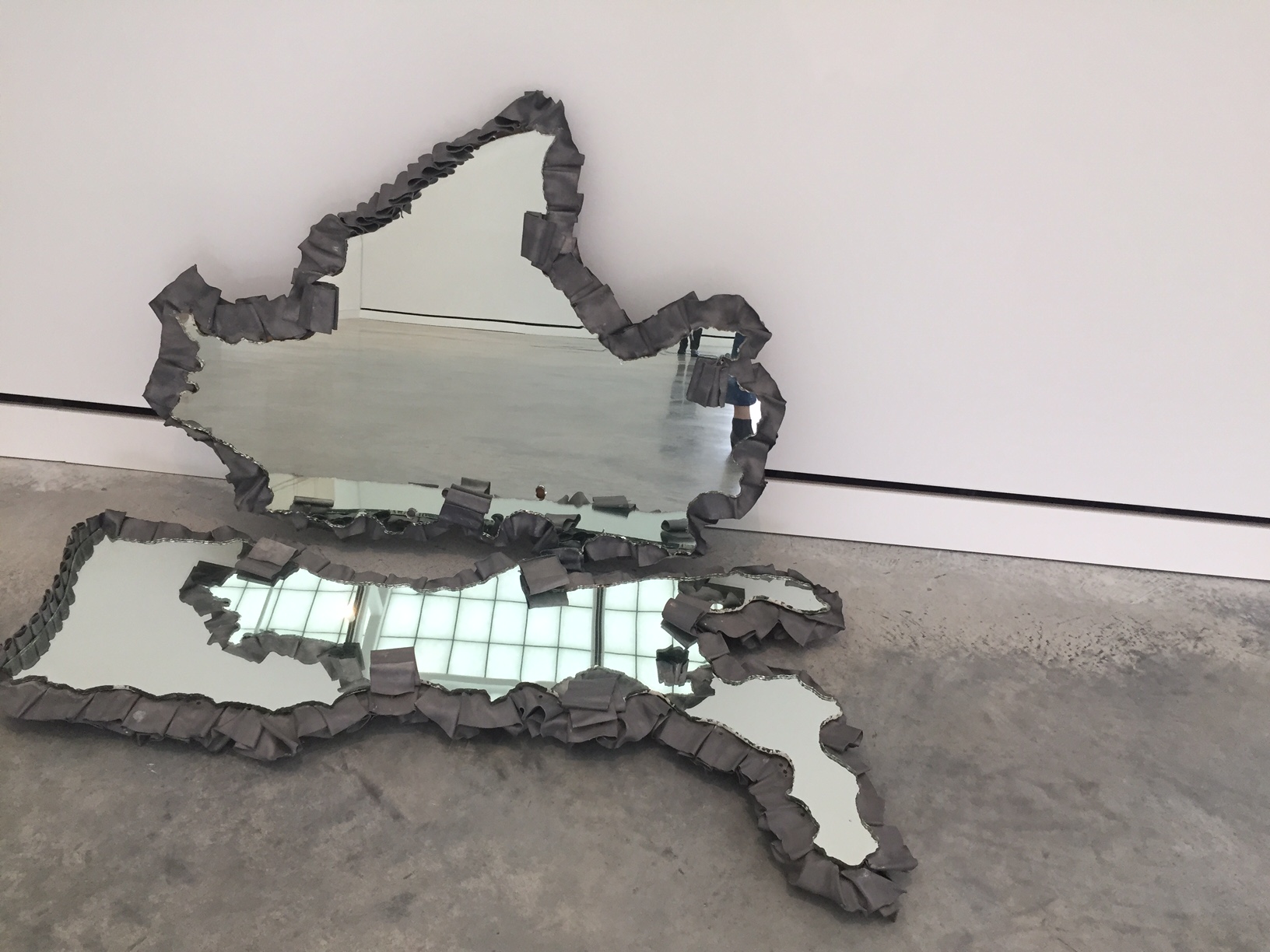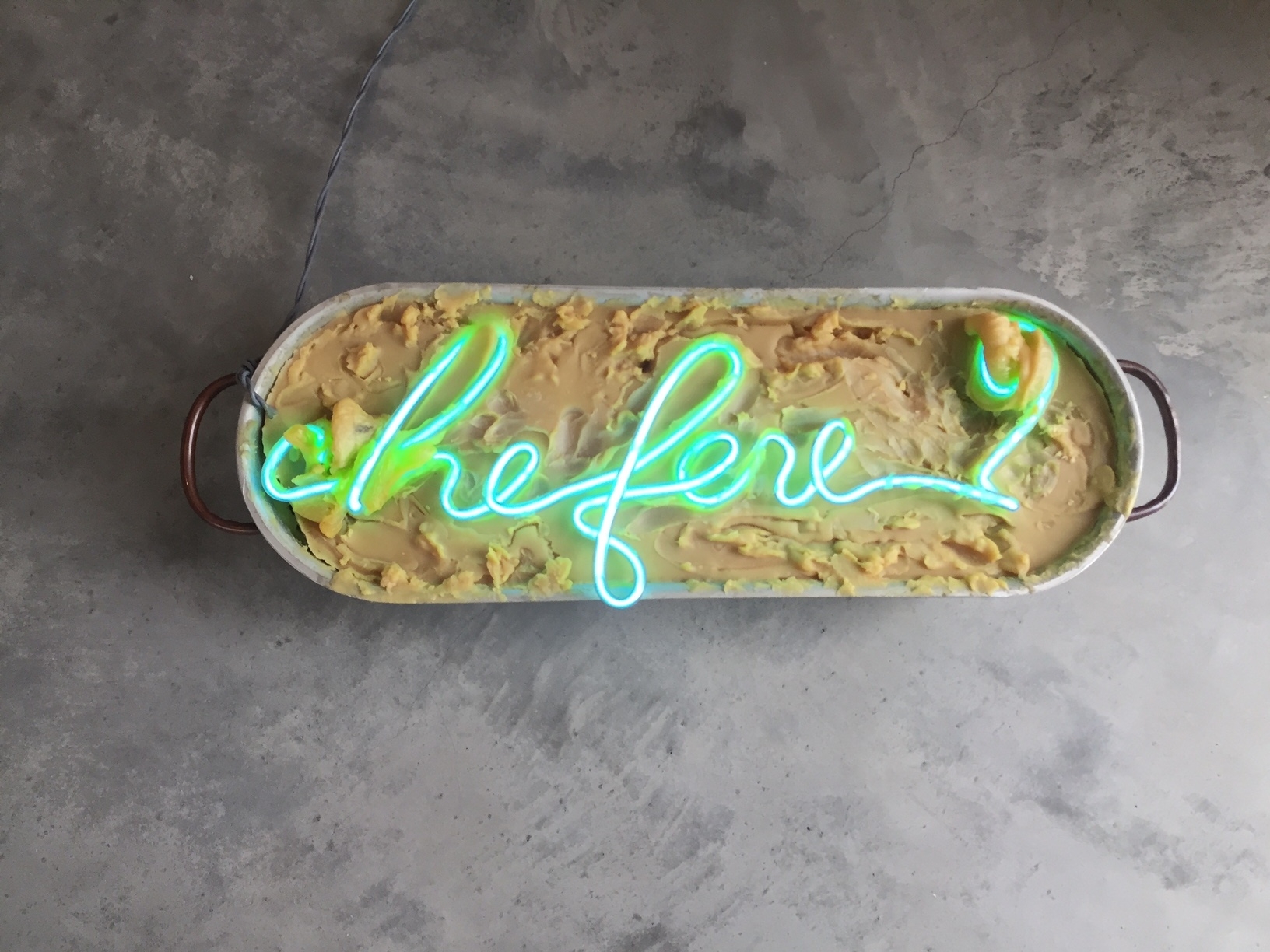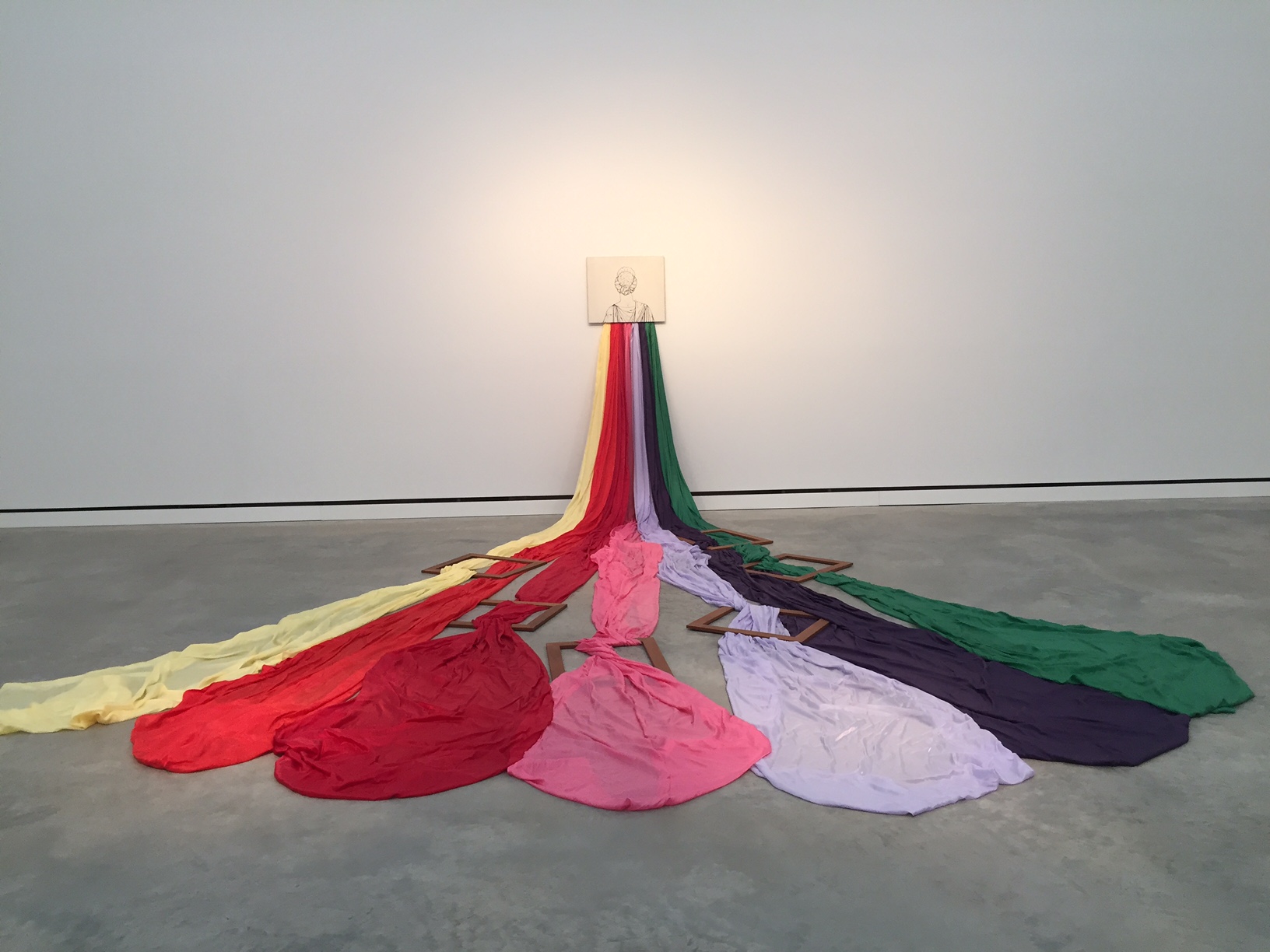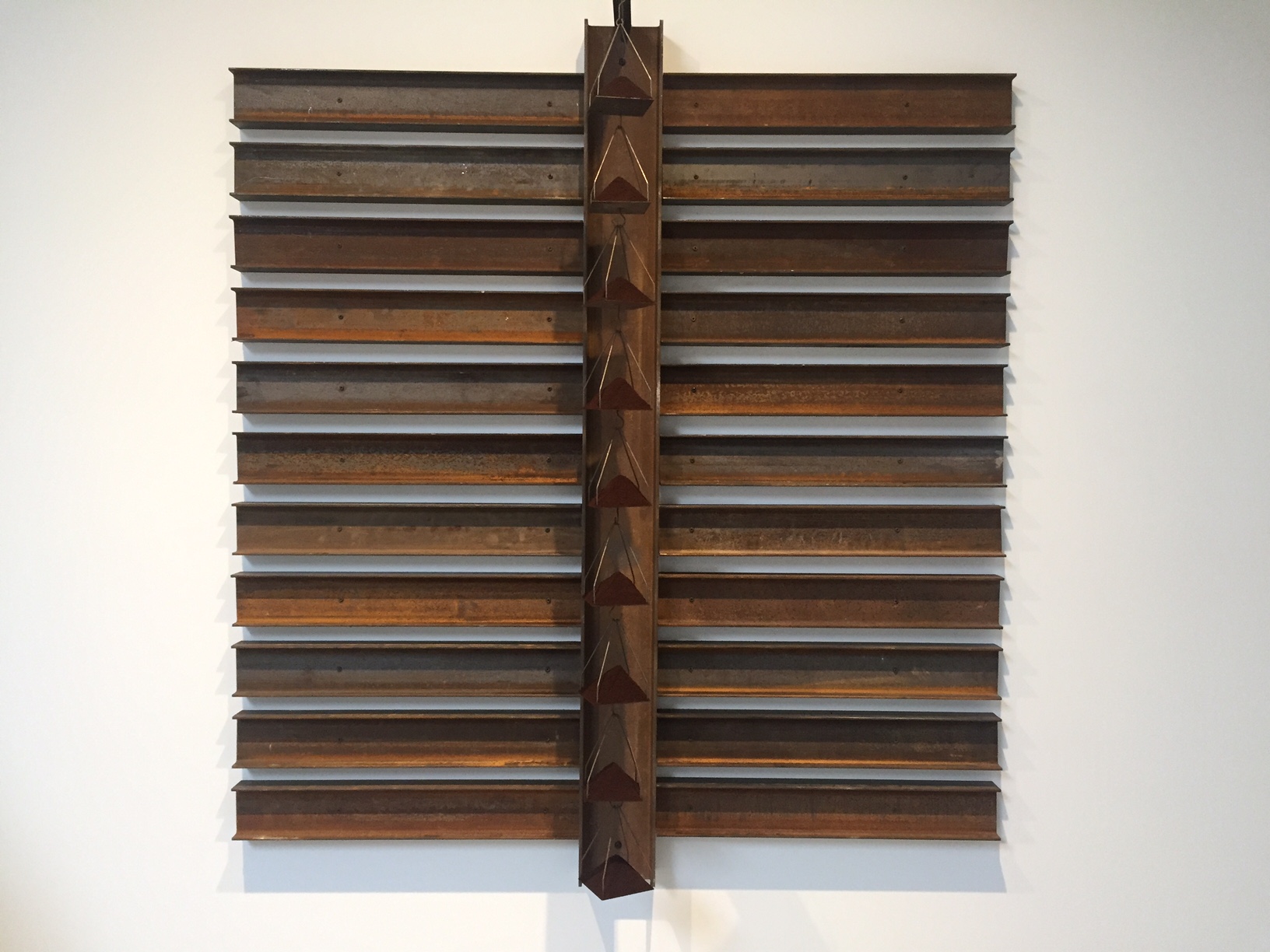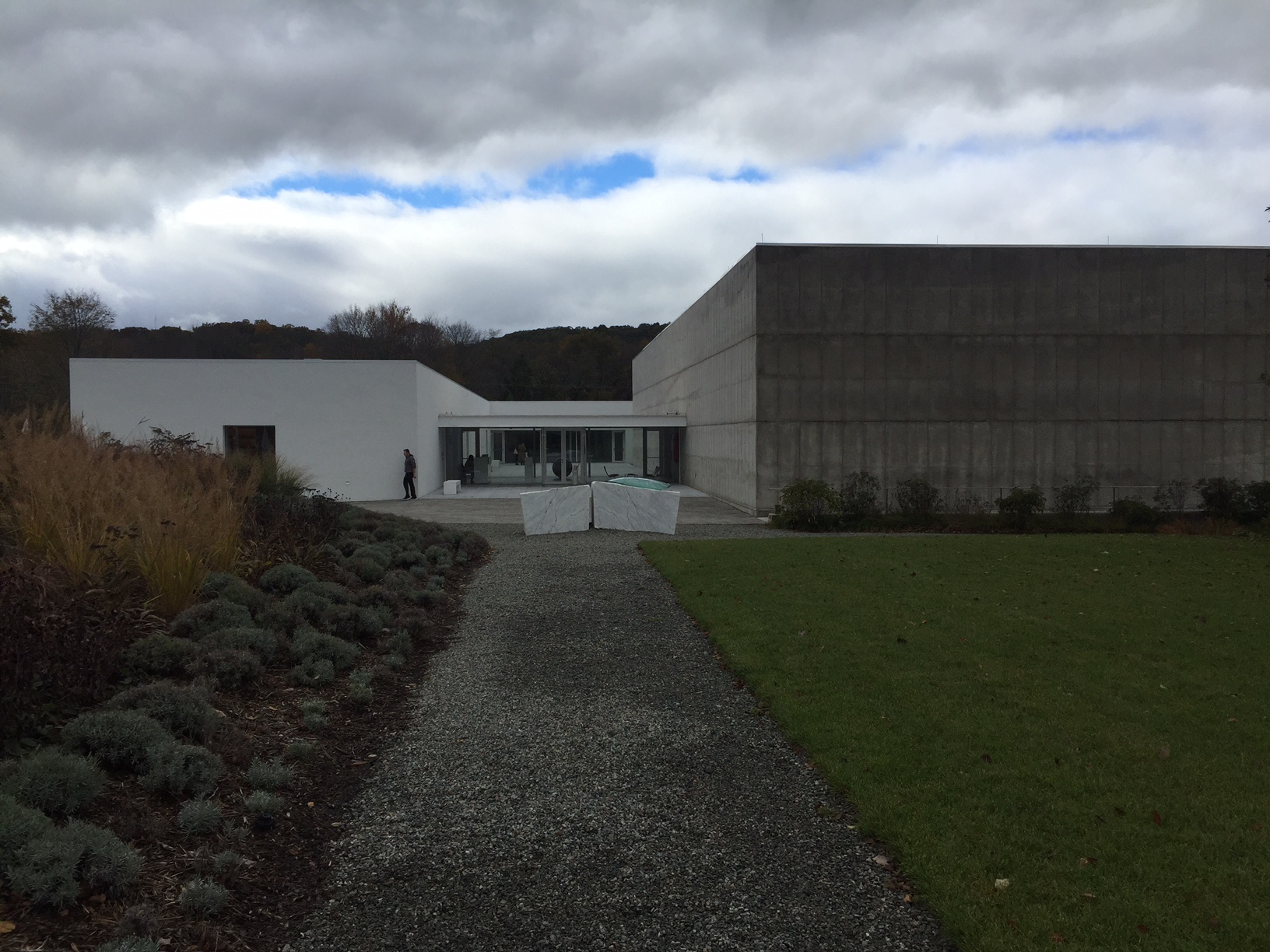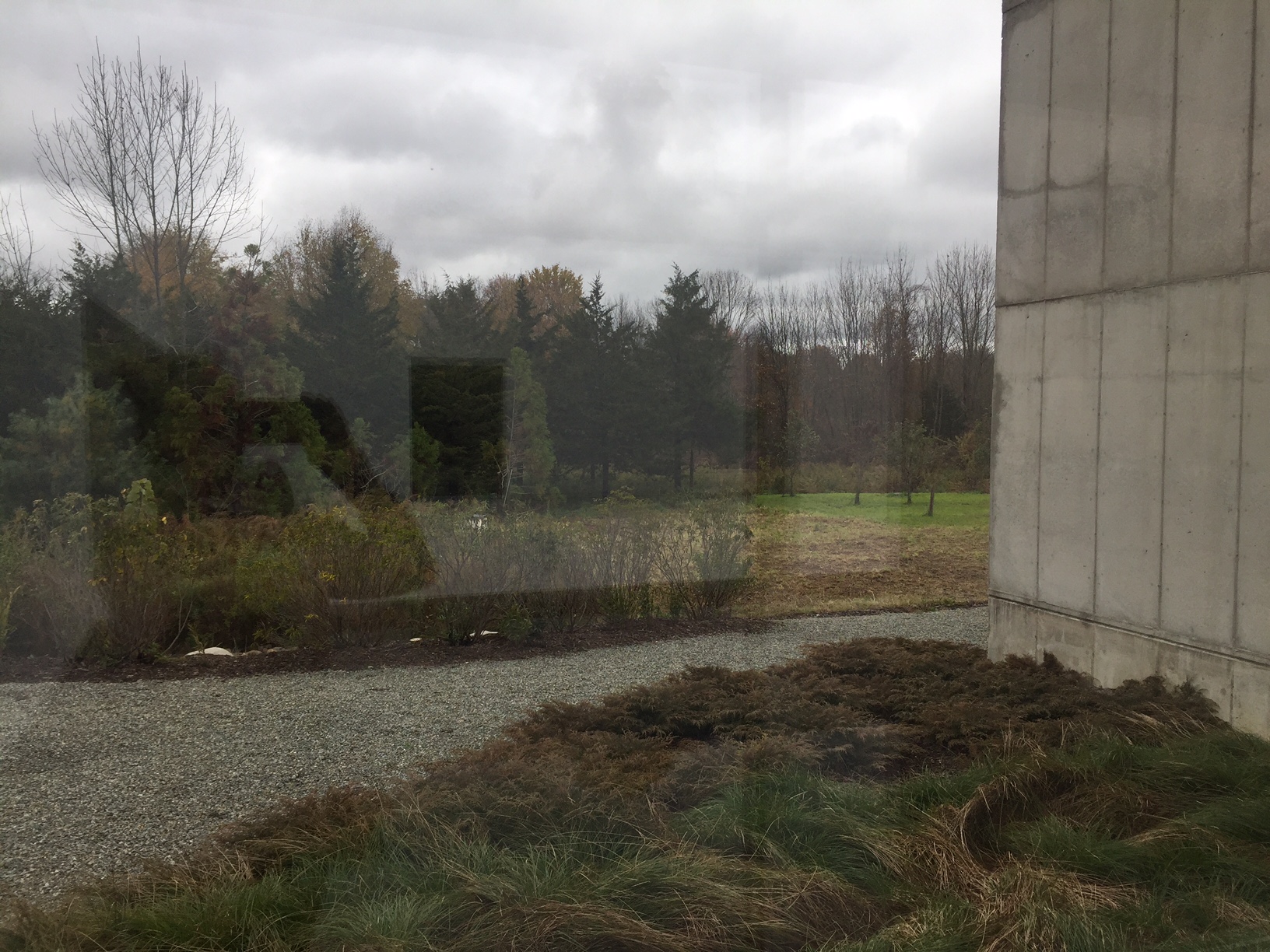Private museums are all the rage. A month ago, Glenstone opened in Maryland. There’s the Broad and so many others worldwide.
But Magazzino Italian Art Museum seems an outlier. It took me a year to finally have a Sunday to get up to Cold Spring. I had hoped for a better show of leaves along the Hudson River train route, but like everywhere else, global warming has pushed back on nature. For at least the second year in a row, there were only muddy browns and golds with the occasional red pop to remind us of what we were missing.
Derived from the collection of Nancy Olnick and Giorgio Spanu, the largely Arte Povera works at Magazzino were lovingly collected with intense focus and scholarship. Arte Povera really becomes understandable at this museum, its motives less murky. Having been lured by post war Torino and north Italy and then tumbling headlong into Sicily and Puglia these last years, the art had special resonance for me.
Margherita Stein was Arte Povera’s champion in Italy and she has passed the torch to the Olnick/Spanus with white heat. Architect Miguel Quismondo has designed a home for them in nearby Garrison and they asked him to carry on with the museum. Having only seen exterior shots of Glenstone’s gray pavilions and coming upon the (smaller) Magazzino gray pavilions, I was slightly put off by the austerity. Once inside however, there is a warmth and logical spaciousness that felt in keeping with the art.
An hour and a half long series of short films hosted by Germano Celant who coined the term Arte Povera at the entry is too long for one go, but 15 minutes will give you the necessary tools to approach the art. No wall labels of course (my pet peeve) but the small booklet you are given at the entrance is a pithy port to the artists and their works.
Celant explains the crucial animating theory of this group, largely a sixties reaction to industrialization and the loss of nature and natural elements. Taking their cues from water, air, land and fire, the primitive elements revered by the Greeks, as well as the animal kingdom, this self-organized Italian group juxtaposed the work of man and the work of nature in novel ways. The point, a very contemporary one, is that we are losing our way.
Alas, until Marisa Merz’s work was ‘exhumed’ a few years ago at the Whitney there was little attention paid to the concurrent work of women. Merz--husband Mario was more closely associated with the group—is here represented by works that captivate for their “warmer” delivery system.
Workers and students were unusually aligned, especially in Europe during the late sixties and the art reflects a rejection of the status quo, then more oriented towards Pop and Minimalism. Other groups of Italian artists were seeking a different way out of the postwar but the Poveristos (my coinage) including Michelangelo Pistoletto, Marco Anelli, Alighiero Boetti, Luciano Fabro, Pino Pascali, Jannis Kounellis, Giuseppe Penone, Giulio Paolini marched to their own drum.
The Olnick Spanus also support contemporary Italian art, some currently on view at the Italian Culture Institute and the exhibition, which closes this week, makes a good pairing with the works at the museum.
